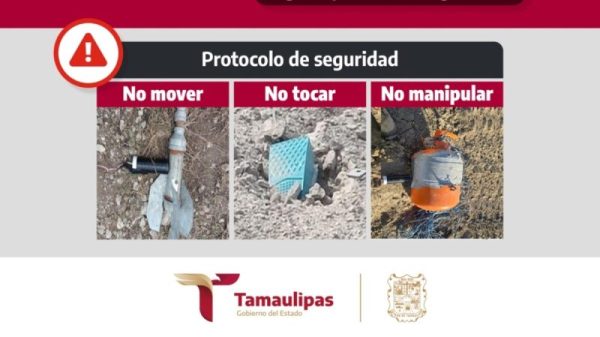According to IoT Analytics, the global cellular IoT connectivity market reached a milestone, with mobile operators worldwide earning a combined $15 billion from 3.6 billion cellular IoT connections in 2023.
This growth rate of 23% YoY exceeded that of IoT software companies and hyperscalers in the same year.
The consolidated market saw its top five mobile IoT network operators manage 83% of all global cellular IoT connections, and the top five by revenue receive 64% of the combined revenue.
Looking ahead, the advent of 5G and 5G Redcap technologies is set to further drive growth in the global cellular IoT market. These technologies are forecasted to push the market at a compound annual growth rate (CAGR) of 18% between 2024 and 2030.
Key Insights:
Mobile operators worldwide earned a combined $15 billion from 3.6 billion cellular IoT connections in 2023– according to IoT Analytics’ Global Cellular IoT Connectivity Tracker & Forecast (updated June 2024) and IoT Mobile Operator Pricing & Market Report 2024–2030 (released July 2024).
Mobile operators’ IoT revenue growth rate of 23% YoY exceeded that of IoT software companies and hyperscalers in 2023.
Cellular IoT connections grew even while the shipments and revenue for cellular IoT modules declined globally in 2023.
The top five mobile IoT network operators managed 83% of all global cellular IoT connections, while the top 5 by revenue received 64% of combined revenue.
5G and 5G Redcap are likely to drive the global cellular IoT market’s forecasted 18% CAGR between 2024 and 2030.
Select quotes:
Satyajit Sinha, Principal Analyst at IoT Analytics, comments:
“5G RedCap is set to transform the IoT landscape by making 5G features more accessible and supporting numerous applications, from industrial IoT to Consumer IoT. Its design optimizations, such as reduced channel bandwidth and capped modulation order, enhance device efficiency and cost-effectiveness. Riding on existing 5G infrastructure, RedCap ensures the longevity of current deployments and eases the transition to next-generation connectivity. It outperforms LTE Cat-1 and Cat-4, with better uplink performance and extended battery life, meeting the critical needs of mid-speed use cases like wearables and smart cameras.”
Market overview
Mobile operators worldwide earned $15 billion from 3.56 billion cellular IoT connections in 2023. According to IoT Analytics’ Global Cellular IoT Connectivity Tracker & Forecast (updated in June 2024)—which shares granular data about connections, revenue, and ARPU across all IoT connectivity types, including 2024 quarterly forecasts—mobile operator IoT revenue grew at a CAGR of 16% since 2010. IoT Analytics projects growth acceleration starting in 2024, with the CAGR expected to exceed 18% through 2030.
Mobile IoT revenue growth rate set the pace in 2023. The IoT revenue growth rate for mobile operators exceeded that for software vendors and hyperscalers in general in 2023, according to IoT Analytics’ Global IoT Enterprise Spending dashboard (updated June 2024). This data point shows that the relative importance of cellular connectivity for IoT-connected devices continues to increase.
The market for cellular IoT connections grew while the market for cellular IoT modules declined. In 2023, cellular IoT module vendors saw a 10% decline in revenue year-over-year (YoY) stemming from a decline in module shipments. However, cellular IoT connectivity revenue grew 23% YoY, supporting IoT Analytics’ recent analysis that the cellular IoT module market decline resulted from inventory strategies to prevent overstocking. Demand for LTE Cat 1 bis and 5G in China has fueled an upswing in the cellular IoT module market.
Top 5 mobile operators by connections and revenue
The top five network operators managed 83% of all global cellular IoT connections in 2023. These top five are China Mobile, China Telecom, China Unicom, Vodafone, and AT&T. In terms of IoT revenue, the top five network operators made up 64% of the IoT mobile operator market, with China Mobile, Verizon, AT&T, China Unicom, and Deutsche Telekom (including T-Mobile) leading the market.
Key insights on 2023 market developments of leading mobile IoT operators:
1. China Mobile. China Mobile contributed 46% of global cellular IoT connections and 20% of global cellular IoT connectivity revenue in 2023. China Mobile’s cellular IoT connections grew by 20% YoY due to its one-stop solution strategy, shifting focus from pure connectivity to comprehensive solutions. China’s mobile one-stop solution strategy encompasses hardware components like chips, operating systems, and modules. It also integrates with three key IoT platforms—OneLink, OneNET, and OneCyber—and targets three main areas of application: video-based IoT, urban IoT, and industrial IoT.
2. China Telecom. China Telecom contributed 15% of global cellular IoT connections and 7% of global cellular IoT connectivity revenue. China Telecom’s cellular IoT connection grew by 28% YoY due to a focus on urban management solutions leveraging the IoT Cognition Cloud Platform, empowering over 100 use cases for urban management. These use cases range from flood-level detection to fire protection, providing a comprehensive view of a city’s status, including aspects such as heat distribution, location and condition, alert statistics, and facility conditions.
3. China Unicom. China Unicom contributed 14% of global cellular IoT connections and 10% of global cellular IoT connectivity revenue. China Unicom’s cellular IoT connection grew by 28% YoY due to the adoption of 4G and 5G high-speed technologies. Notably, deploying 5G IoT connections led to China Unicom’s growth.
4. Vodafone. Vodafone contributed 5% of global cellular IoT connections and 9% of global cellular IoT connectivity revenue. Vodafone’s cellular IoT connection grew by 15% YoY due to strong demand from the automotive sector.
5. AT&T. AT&T contributed 4% of global cellular IoT connections and 12% of global cellular IoT connectivity revenue. AT&T’s cellular IoT connection grew by 19% YoY due to strong demand from the automotive sector.
IoT connectivity price points vary by region. According to IoT Analytics’ 159-page IoT Mobile Operator Pricing and Market Report 2024–2030 (published in July 2024 with its accompanying optional IoT Operator Pricing Database), Western mobile operators companies like AT&T, Verizon, Deutsche Telekom, and others offer cellular IoT data plans at relatively higher price points than the global average, leading to higher revenue even with fewer IoT connections. However, China Mobile leads in both revenue and the number of connections.
Future outlook: 5G and 5G Redcap to drive IoT connectivity market growth
5G and 5G RedCap to contribute nearly 50% of mobile operator IoT connectivity revenue by 2030. Based on the IoT connectivity tracker, IoT Analytics forecasts 5G and 5G RedCap will drive the global cellular IoT connectivity market up to a CAGR of 18% from 2024 to 2030 as they increase their combined market revenue share to a near majority by the end of this timeframe. According to IoT Analytics’ 367-page 5G IoT & Private 5G Market Report 2024–2030 (published in June 2024), 5G IoT connections are forecasted to grow at a CAGR of 44% from 2024 to 2030.
Flexibility and cost-effectiveness drive 5G RedCap adoption. IoT devices embedded with the RedCap module do not require tight or deterministic latency as in time-critical communications applications. Such devices require a data rate of less than 150 Mbps for download and less than 50 Mbps for upload, with a latency of less than 100ms. This reduces the complexity of the devices and keeps the costs down, leading to a noticeable increase in consumer, enterprise, and industrial devices using 5G RedCap hitting the market. Most notably, 5G RedCap’s use in video surveillance is gaining popularity, as it offers sufficient uplink data rates required for video cameras to transmit high-quality video streams without requiring the full capabilities (and costs) of standard 5G.
What it means for mobile operators offering IoT services
8 questions executives at mobile operators offering IoT services should ask themselves based on the insights in this article:
1. Revenue diversification: How can we diversify our IoT service offerings to capture a larger share of the $15 billion IoT connectivity market?
2. Market share expansion: What strategies can we implement to increase our market share and compete more effectively with the top five mobile IoT network operators?
3. 5G and 5G RedCap adoption: How can we accelerate the deployment and adoption of 5G and 5G RedCap to capitalize on the forecasted 18% CAGR in the cellular IoT market?
4. Automotive sector opportunities: What specific steps can we take to increase our presence and revenue in the automotive sector, following Vodafone and AT&T’s success?
5. Deployment strategies: How should we adjust our deployment strategy of pure-play connectivity to comprehensive solutions?
6. Partnerships and collaborations: What potential partnerships and collaborations should we pursue to enhance our IoT service offerings and expand our market reach?
7. IoT platform integration: How can we integrate our IoT solutions with key IoT platforms to provide comprehensive solutions and attract more customers?
8. Consumer and enterprise solutions: What innovative consumer, enterprise, and industrial solutions can we develop to leverage the growing adoption of 5G RedCap and meet market demands?
What it means for cellular IoT module, chipset, and device manufacturers
5 questions executives at companies manufacturing cellular IoT modules, chipsets, or devices should ask themselves based on the insights in this article:
1. 5G and 5G RedCap readiness: How can we accelerate the development and integration of 5G and 5G RedCap modules to capture a significant share of the forecasted 18% CAGR in the IoT market?
2. Market demand: What specific demands from the automotive sector and other industries can we address with our IoT modules and devices to drive growth?
3. Pricing strategies: What adjustments to our pricing strategies can we implement to align with market expectations and increase our revenue share?
4. Partnership opportunities: Which mobile operators and other stakeholders should we partner with to expand our market reach and enhance product integration within the IoT ecosystem?
5. Future technologies: What emerging technologies and trends should we focus on to ensure our product portfolio remains relevant and competitive in the rapidly evolving IoT market?
The post Global cellular IoT connectivity market reached $15B in 2023, 5G set to drive further growth appeared first on IoT Business News.































